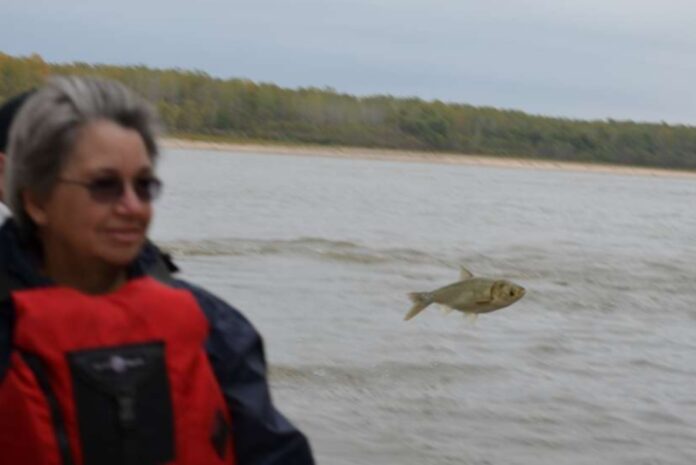There’s a warning about invasive carp in two western Wisconsin rivers.
The Department of Natural Resources said silver carp have been found in both the lower Chippewa River and lower Black River.
“In July, the DNR began receiving reports from anglers of jumping fish suspected to be invasive carp at the Dells Dam on the lower Chippewa River in Eau Claire. The Dells Dam in Eau Claire prevents further upstream passage of invasive carp in the Chippewa River System,” the
DNR said. “On Aug. 1, DNR staff went to the dam and observed jumping fish but were unable to verify the species of fish.”
The department said it confirmed silver carp in the lower Black River in September.
“The dam in Black River Falls is a barrier to upstream fish migration, and no observations or other detections of invasive carp have been reported in the lower Black River at this time,” the DNR added.
Silver carp are an invasive species in the Midwest and have done immense damage to other rivers where they’ve been found.
“It is believed that the carp may have migrated in June and early July due to the high-water levels observed on the Mississippi River, which would have allowed fish to move upstream into adjacent tributaries,” the department explained. “Tributaries to the lower Chippewa River, such as the Red Cedar River up to the Lake Menomin Dam and the Eau Claire River up to the Lake Altoona Dam, may be other potential locations where invasive carp might be observed since these waterbodies do not have barriers that would prevent upstream fish movement from the adjacent lower Chippewa River.”
The DNR is not saying what it plans to do about the carp but is asking people to keep an eye out for them.
“Although no technology currently exists to eradicate invasive carp, the DNR is working collaboratively with other state and federal agencies on the research and development of invasive carp prevention and control technologies,” the department added. “Anglers and others who capture any potential invasive carp are asked to euthanize the fish, put them on ice and contact a local aquatic invasive species staff, fisheries biologist or warden to confirm identification.”










![WATCH: Elon Musk Town Hall Rally in Green Bay [FULL Video]](https://www.wisconsinrightnow.com/wp-content/uploads/2022/04/Elon_Musk_3018710552-356x220.jpg)



![The Wisconsin DOJ’s ‘Unlawful’ Lawman [WRN Voices] josh kaul](https://www.wisconsinrightnow.com/wp-content/uploads/2025/03/MixCollage-29-Mar-2025-08-48-PM-2468-356x220.jpg)







![Phil Gramm’s Letter to Wall Street Journal [Up Against the Wall]](https://www.wisconsinrightnow.com/wp-content/uploads/2025/03/gramm-356x220.png)











